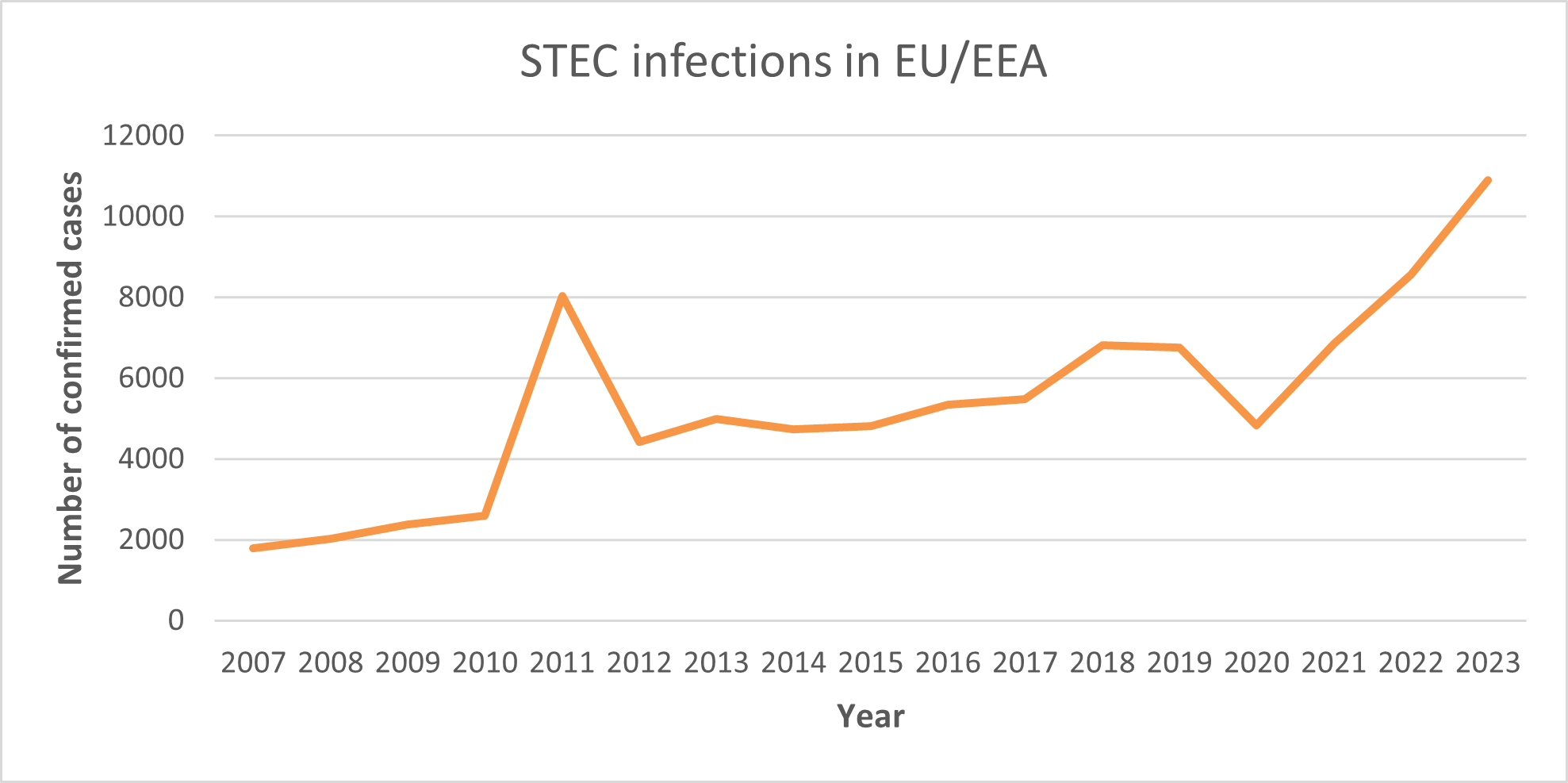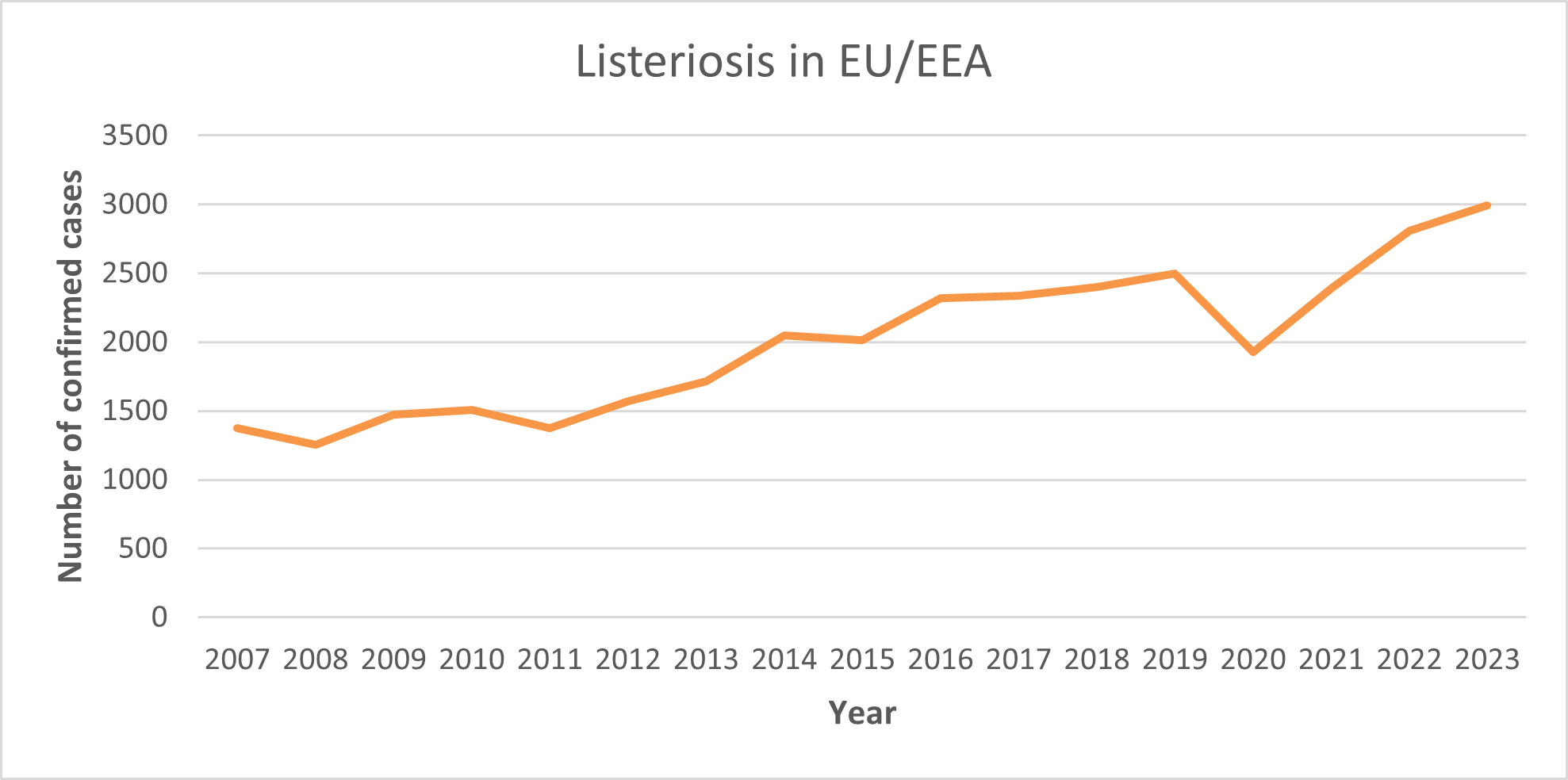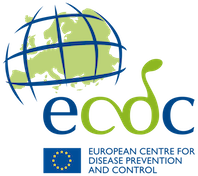Record-high rates of STEC and Listeria infections in the EU/EEA in 2023
Shiga toxin-producing Escherichia coli (STEC) and Listeria infections in the European Union/European Economic Area (EU/EEA) reached their highest levels in 2023 since the start of EU-wide surveillance in 2007, according to the latest annual epidemiological reports issued today by the European Centre for Disease Prevention and Control (ECDC).
Significant increase in STEC cases
In 2023, a total of 10 901 confirmed cases of STEC infection were reported across 30 EU/EEA countries, marking a 22% increase compared to 2022 and the highest annual notification rate (3.2 per 100 000 population) recorded to date. The rise in reported cases can partly be attributed to laboratory diagnostic tests that are more sensitive than traditional testing methods and which allow for broader testing beyond specific patient groups or symptom types.
 STEC infection is primarily transmitted through contaminated food, water, or direct contact with infected people or animals. It can cause severe gastroenteritis, enterocolitis, and bloody diarrhoea, and in some cases leads to haemolytic-uremic syndrome (HUS), a serious condition causing progressive kidney failure. Children under the age of five are the most affected group.
STEC infection is primarily transmitted through contaminated food, water, or direct contact with infected people or animals. It can cause severe gastroenteritis, enterocolitis, and bloody diarrhoea, and in some cases leads to haemolytic-uremic syndrome (HUS), a serious condition causing progressive kidney failure. Children under the age of five are the most affected group.
Record-high listeriosis cases
A total of 2 993 confirmed listeriosis cases with 340 deaths were reported in 2023, making it the highest annual number recorded to date. Listeriosis primarily affects elderly individuals, pregnant women, newborns, and people with weakened immune systems. The disease is associated with severe complications, including meningitis, brain infections, and life-threatening bloodstream infections, making it one of the most serious foodborne illnesses under EU surveillance. The increasing elderly population, along with changing dietary habits such as higher consumption of ready-to-eat foods, may be contributing to the upward trend.
Rising trends in disease severity for STEC and listeriosis
 Indicators for disease severity show an increasing trend for both STEC infections and listeriosis. While the number of HUS cases stabilised to around 500 in 2023 since the record high in 2022, monitoring highly pathogenic STEC variants remains critical to guide public health management. This includes patient follow-up and providing enhanced surveillance guidance.
Indicators for disease severity show an increasing trend for both STEC infections and listeriosis. While the number of HUS cases stabilised to around 500 in 2023 since the record high in 2022, monitoring highly pathogenic STEC variants remains critical to guide public health management. This includes patient follow-up and providing enhanced surveillance guidance.
Most healthy adults exposed to Listeria bacteria do not develop symptoms, but the invasive form of the disease can have severe consequences among vulnerable populations. Pregnant women are advised to avoid high-risk foods, as infection can impact pregnancy outcomes.
Prevention and control measures of STEC infections and listeriosis
To mitigate the risk of infections and outbreaks, ECDC emphasises the importance of:
- Good hygiene practice in food production and handling, particularly in settings involving animals.
- Proper food preparation, including washing and peeling vegetables, adequate cooking of meat, and the use of pasteurised dairy products.
- Enhancing public awareness on hand hygiene, particularly for children visiting petting farms and zoos to avoid STEC infection. Raising awareness of listeriosis and risky foods, such as ready-to-eat fish and meat products, among vulnerable populations.
- Continuing to isolate relevant PCR positive patient samples and routinely report whole-genome sequence data for surveillance and public health management purposes.
ECDC continues to monitor these trends and urges health authorities to strengthen surveillance, prevention, and response measures to combat the rise in foodborne diseases across the EU/EEA.






